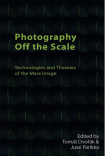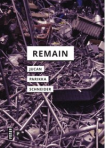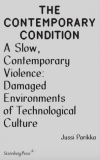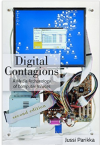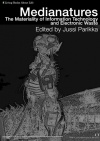Archive
Lost Islands at the Helsinki Biennial: a conversation with Samir Bhowmik
I had the pleasure to be an advisor for Samir Bhowmik’s art and performance project Lost Islands (2021) that was commissioned by the Helsinki Biennial. Here’s a talk/conversation we did with Samir as part of the public talks program of the Biennial – we discussed the Anthropocene, performance arts, the island and infrastructure, and other themes stemming from the Lost Islands (as well as Samir’s own art-research work).
Lost Islands
Lost Islands, a performance project by Samir Bhowmik (and co-choreography by Esete Sutinen) is on now at the Helsinki Biennial. Book your place if in Helsinki, but have a look at the trailer video for a glimpse of the themes: anthropocene, infrastructure, architecture, etc.
“Lost Islands is a series of expeditions tracing the route of an imaginary subterranean and underwater cable through the island of Vallisaari, with the artist serving as tour guide and narrator. The expeditions venture into the island’s topography, forested pathways, waterways, historical buildings, ruins and bunkers. Along the way, visitors are engaged and immersed in installations, film, theatre, contemporary dance, song, and experimental music. The expeditions will take place as a series of events staged on the island from June to August.”
For more info on the work and credits, see also https://helsinkibiennaali.fi/en/artist/samir-bhowmik/ .
Media Theory with the Terraformers
A new interview is out in the Strelka Mag. We conducted this discussion with Yulia Gromova in Moscow during my teaching gig at Strelka’s The Terraforming program in February. The interview also briefly touches on my brief that we executed with the program researchers: we inaugurated a new synthetic discipline called A Natural History of Logistics and related to the body of work in media theory, architecture, urbanism, etc. The idea was to tease out various historical and contemporary – actual and speculative – points of connections between systems often deemed “natural” and “technological” so as to problematise the division into the two, and also to understand the various affordances so-called natural systems have in relation to questions of infrastructure and logistics. This also then facilitated looking at the various material frictions in logistical systems in relation to territories, environmental concerns, political questions, etc. The results presented by the Strelka researchers of the Terraforming cohort 2019-2020 – from architects to designers to artists etc. – were really inspiring and impressive.
The interview in Strelka Mag also speaks of some other work, including on Geology of Media etc.
The Amazon Machine
Joana Moll’s new project The Hidden Life of an Amazon User launches online, investigating the relations of code, users, logistics, space and transport. It also deals with the double energies of energy infrastructures of online platforms/logistics companies such as Amazon, and the energies of usage of customers. I was also invited to write for the project; in my short text I outline how “Moll’s critical interface project can also be considered an experimental set up of the Standard Amazon User (SAU): a semi-automated algorithmic pattern of interface actions that are measured and guided by a mass of code and synchronised in relation to the planetary scale logistical operation that is the backbone of Amazon’s infrastructural and data-intensive operations – the warehouse driven architecture of digital economy. “
The full text here.
In Conversation with Geocinema
The Digital Earth fellowship program enabled me to work with Solveig Suess and Asia Bazdyrieva from Geocinema over a half a year period, and here’s a podcast conversation we recorded (with a big hat tip to Jessika Khazrik) recently. We discuss Geocinema project and their work in China relating to the Digital Belt and Road, and their methodologies of (feminist) filmmaking, audiovisual aesthetics of infrastructure, geopolitics and more. Their work resonates strongly with what is the core of the Digital Earth program’s theme:
“Digital Earth’ refers to the materiality and immateriality of the digital reality we live in – from data centers to software interfaces, and rare minerals to financial derivatives. Earth is dug, excavated, and ripped apart to extract the fundamental materials that keep the computational machine running – oil, coltan, sand, rubber, lithium form the material basis on which digital reality is built. At the same time, digital technologies enable new modes of circulation and extraction, of information and data.”
For me, the fellowship scheme linked also nicely to the Operational Images project that has recently started. I also recently discussed their work in relation to questions of Farocki’s operational images/Sekula’s instrumental images, and what sort of resonances and dissonances there exists in these conceptualisations and methods of moving and still images that concern automation, remote sensing, infrastructure, and large-scale systems. My next plan is to write some of these thoughts up into an article.
Have a listen and share with others who might be interested!
Operational Images project funding
Some news: I am happy to announce that we have won a large grant for our proposal “Operational Images and Visual Culture” with colleagues at FAMU, photography department, part of the Academy of Performing Arts, Prague. Funded by the Czech Science Academy, our research team will engage with contemporary visual culture, photographic theory and the notion of operational images that stems from Harun Farocki’s work. The project is not solely focused on Farocki but the concept of the operational – sometimes translated as operative – image becomes one of the guiding lines of inquiry that facilitates useful, interesting and alternative ways to understand media archaeology of technical images (as patterns, as measurement, as instructions etc.) and contemporary practices of photography. Automated, instructive, algorithmic, measuring and non-representational images are here part of our focus that stems from some of the discussions of past year’s of media, film and visual theory.
FAMU has a great reputation, not least as a renowned film school and I have had the pleasure of collaborating especially with Dr. Tomáš Dvořák over the past year on other projects already. Stay tuned for updates from our Operational Images project and please get in touch if you have any questions!
The Project’s FAMU website for further info.
Library’s Other Intelligences videos
Our show Library’s Other Intelligences is on at Oodi in Helsinki until March 10th and we have now our videos of the three featured pieces! Please find links below:
Jenna Sutela: nimiia ïzinibimi
Jenna Sutela’s nimiia ïzinibimi is a unique book based on an invented new language representing those who lack first-hand access to, or the ability to produce, “natural” language.
Samir Bhowmik & 00100 ENSEMBLE: Memory Machines
Samir Bhowmik’s and 00100 ENSEMBLE’s Memory Machines is a performative art project that explores the infrastructure of the Central Library Oodi
Tuomas A. Laitinen: Swarm Chorus
Tuomas A. Laitinen presents Swarm Chorus. He composed a performative installation and a sound piece with generative tools that are interpreting the construction of medieval musical canons. The work as a whole is likened to an ecosystem of circulating substances, with its words, inspired by ecological science fiction, functioning as fictional recipe poems describing and decoding an alchemistic combination of matter and meaning.
In addition, the Code, Craft, and Catalogues: Arts in the Libraries-seminar will take place in New York on March 9th. It is also part of the Mobius fellowship program.

On Paul Virilio
Paul Virilio (1932-2018) passed away recently in September. We wrote a short piece with Ryan Bishop about him – Blitzkrieg Baby.





